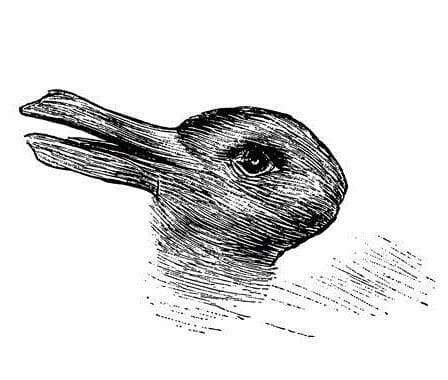
“All things are subject to interpretation.
Whichever interpretation prevails at a given time
is a function of power and not truth.”
―
Researchers report: Civility isn’t just in decline, it is disappearing.
Because we are losing this fundamental character trait, we are teaching kindness in school. Is this a new virus or the result of the pandemic virus? Or is it a result of our enforced isolation, remote environments, disconnectedness, fractiousness, or more?
If we have been in our bubble too long, we risk losing perspective and misunderstanding the system we live and work within. Or perhaps, our competencies of coordinating have become rusty.
Have you noticed this behavior in your workplace: a different perspective — delivered as an opinion — developed into a narrative to which the individual tries to attract other people to agree with them and their narrative? Or is it intentional miscommunication? And how is this perspective wrapped? Is it wrapped in a strongly stated opinion rapidly delivered as a truth? Is this helpful, hurtful, or simply disruptive?
I have been struggling with and trying to navigate situations where members of the workforce are asserting themselves outside their circle of influence, without any recognition of the power system in which they operate, often with inflammatory language and a void of civility. I think of this scenario as a virus moving through our organizational systems.
Last week, I found myself in a position of needing to abandon meeting agendas so I could pivot and respond to the tearing and fraying of relationships in front of me.
This is not work that scares me. It is important, essential, and critical to engage the heated energy. Left untended, it usually worsens and goes underground only to pop up when you least expect it to be present — not unlike an untended fire!
My concern is about the volume and the contagiousness of these behaviors.
I have realized that people’s attachment to their opinions and narratives — often without any basis in fact — has been a challenge for many years. It became more habitual during the isolation of the first years of COVID, when we were working remotely and distanced in our own social media bubbles.
It takes work to seek other perspectives. It takes effort to slow things down and to open one’s mind to difference. I would observe that Zoom calls and emails are not the best media for surfacing and resolving conflicts. Our remote working tools may contribute to the segmentation of our conversations as well as to misunderstandings.
All this friction is happening within organizations that attract and retain good people; have clear missions, values, and vision; and actively work on relationships. No one is immune to this virus of over-self-confidence that can quickly turn into righteousness and be asserted at times and in ways that hurt instead of help.
When this happens, some of us go primal into flight or fight. Some get out our hammers and apply force or fear. Few follow the wisdom of Ari Weinzweig, co-founder of Zingerman’s: “Get curious, instead of furious.” This is a simple action and practical — but hard to apply when confronted with what feels to be irrational and entitled, which is not presented as a proposal, observation, or question but confidently shared as a done deal. If a gang of individuals has found their common ground in a story or solution that does not take into consideration the whole system — or other perspectives of all those impacted — and expects it to go their way, how do you intervene?
I would kindly observe that we in our response to a pandemic, in a remarkable shift to working remotely and safely, have now developed a dependency on remote technology and processes. We may have lost some important things in the effort that can only be maintained when we work together and work things out together in dialogue, face-to-face.
My thinking about this further evolved when I read what a colleague wrote in her daily distributed leadership message:
“What do you see here?
“You may see a duck . . . you may see a bunny . . . you may see both at the same time. It’s about perspective.
“Yesterday, I had a lovely conversation with someone in which we spoke about perspectives. One side looking at a duck’s head, one side looking at a bunny. To find who is “right,” we discussed that we need to do additional research to find the “truth.” And, we recognized that sometimes there is no one “truth”.
“Perspectives in leadership are just like this optical illusion. Duck or bunny or both. Strong leaders recognize that there are multiple perspectives, attempt to see all sides, and when needed, make a decision based upon company values, future goals, and what is in the best interest of all. And sometimes strong leaders need to step back and realize that it is an optical illusion, and it doesn’t matter if it is a duck or bunny.”
Heather Houser,
Lending Trainer / Coach,
First Federal Savings and Loan of Lorain
Heather’s message helped me to soften my approach, smile at how easy it is to ‘see something different,’ and express that perspective/opinion with great confidence. And how — if we pause and look for the best intentions in everyone — we can work out the many ways we misunderstand and misrepresent each other. Maybe the cure for the virus — this virus of trying to contribute and engage complexity while only seeing one side of a picture — is to slow down and ask for all the perspectives to be shared.
Is this the simplified version of “Go to bed and call the doctor in the morning?”
Or metaphorically: “An apple (a new perspective) a day keeps the doctors and conflicts away?”
Leslie
“Because one believes in oneself, one doesn’t try to convince others.
Because one is content with oneself, one doesn’t need others’ approval.
Because one accepts oneself, the whole world accepts him or her.”
― Lao Tzu
“Everything that irritates us about others
can lead us to an understanding of ourselves.”
― Carl Gustav Jung



Recent Comments